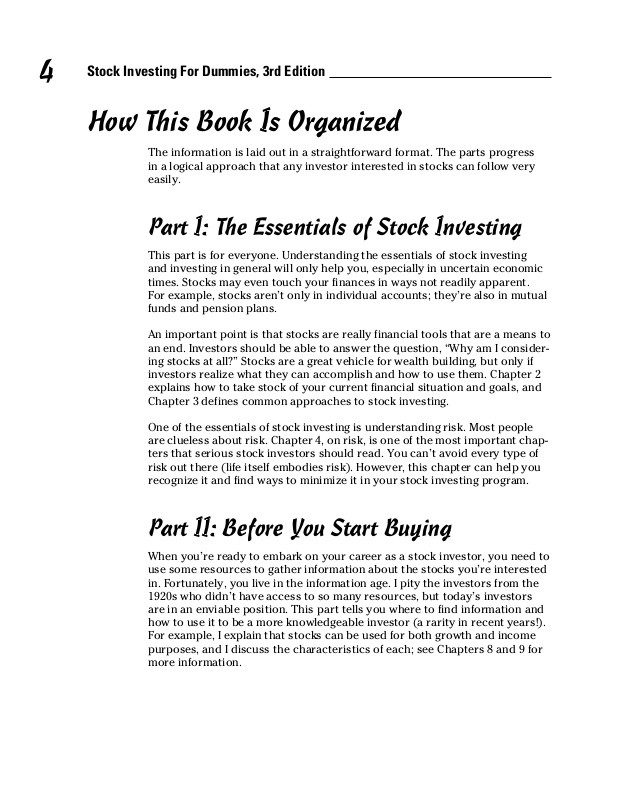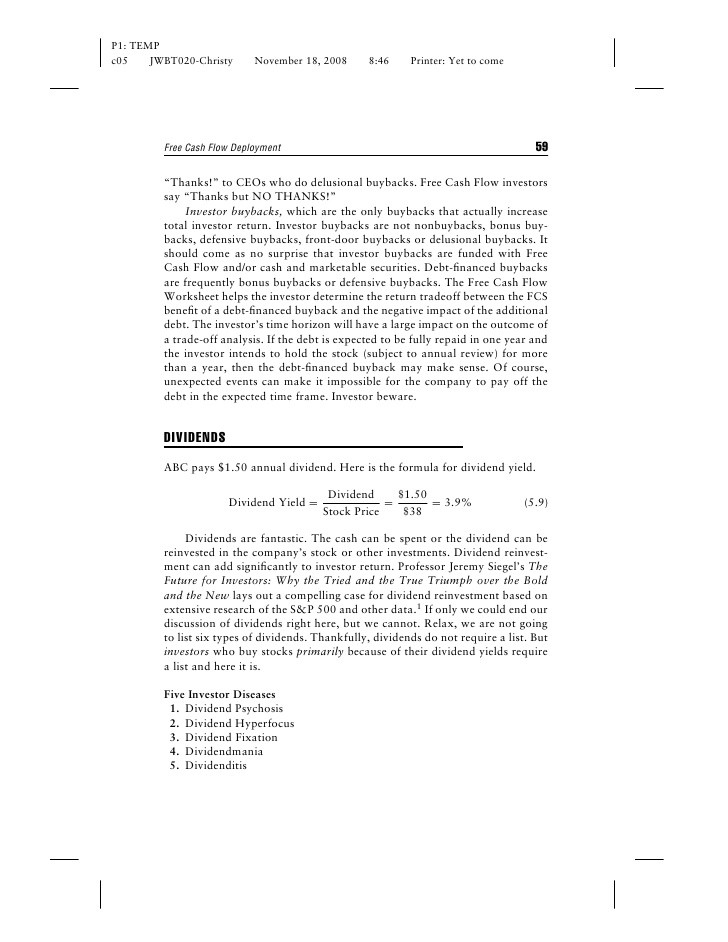New stock research and analysis book Fire Your Stock Analyst a stepbystep guide for finding
Post on: 11 Апрель, 2015 No Comment

Experts tell us that investment success requires a disciplined approach for finding, researching, and analyzing potential investments. This chapter describes one such approach, and the ensuing chapters fill in the details. It’s based on sound principles that are practiced by market-beating money managers. It’s certainly not the only way, and it may not be the best way. But it’s a place to start, and following it will make you a better investor. After you’ve mastered these strategies, you can modify them to suit your needs.
The process involves finding investment candidates, weeding out the obvious misfits, researching and analyzing the survivors, picking the best candidates, and equally important, applying a clear-cut set of selling rules.
Finding Candidates
Finding stocks to analyze can be as easy as going to your hair salon, talking to your neighbors, picking up a magazine, surfing the Internet, or turning on the TV. You’ll find no shortage of tips, and you’ll welcome them once you’ve gained confidence in your analysis skills, because you’ll be able to weed out the bad ideas quickly.
As your experience grows, you’ll get a feel for what discriminates strong candidates, and you’ll find yourself increasingly taking advantage of screening to uncover investment ideas.
Screening is a technique for scanning the entire market for stocks meeting your criteria. It’s a powerful tool, but to use it effectively, you have to first understand how to identify the best candidates. That will come with time, and in the meantime, I’ve provided a few sample screens in Chapter 3 to get you started.
Treat all names you get, whether from your own screens, friends, TV gurus, or even Warren Buffett, as tips to analyze using the techniques you are about to learn.
Analyzing Stocks
Remember COSC:
Concentrate On the Strongest Candidates
Our analysis techniques follow a survival-of-the-fittest approach, where you’re constantly weeding out the weakest contenders. These techniques work best if you start with a large group of candidates, say 10 to 20, instead of just a few. Researching stocks takes time and effort so eliminate weak contenders as soon as you discover them. That way you can concentrate your research on the strongest candidates. Be ruthless. There is no point in wasting time researching stupid ideas.
Quick Prequalify
Use the quick prequalify test to identify the obvious misfits. These may be stocks that would be bad news for any investor. Perhaps they’re firms with businesses based more on hype than reality with little or no sales or earnings. Or they could be stocks that simply don’t fit your investing style. For instance, maybe they are value stocks and you’re a growth investor.
Use the quick prequalify test to check:
Company and industry overview.
Find out something about the company’s business and its industry. It may be in a business or market sector that you favor or that you want to avoid. For instance, the home building industry usually prospers when interest rates drop, and suffers in a rising interest rate environment. So your take on the future direction of interest rates would influence how you view homebuilders.
Market Capitalization.
Market capitalization defines a company’s total value (share price multiplied by number of shares). The biggest firms are designated large-caps, and progressively smaller firms are termed mid-caps, small-caps, and micro-caps.
There is no good or bad market capitalization, but each size has its own pluses and minuses in terms of potential risks and rewards. Generally larger companies are considered safer, and smaller firms offer more growth potential. However, even these generalities vary with current market conditions.
You may decide that a particular company size range best suits your needs, or conversely, that you’re open to all possibilities. Whatever you conclude, eliminate candidates in this step that don’t fit your requirements.
Valuation ratios.
Valuation ratios such as price to earnings (P/E) or price to sales (P/S) define how market participants view your candidate’s earnings growth prospects. High valuations reflect in-favor stocks, that is, those seen having strong growth prospects, and thus appeal to growth investors. Conversely, value players look for stocks with low valuation ratios, indicating that most market players (growth investors) view them as losers.
Any given candidate will fit into either the growth or value categories, but not both. The valuation ratios give you a quick read as to whether you have a value or growth candidate on your hands.
Trading volume.
Trading volume is the average number of shares traded daily. Low trading volume stocks spell trouble because they’re subject to price manipulation and mutual funds can’t buy them. Here’s where you’ll toss these bad ideas.
Float.
Corporate insiders such as key executives and board members are restricted as to when and how often they can buy and sell their company’s shares. So insider owned shares are not considered available for trading. The float is the number of outstanding shares not owned by insiders, and thus available for daily trading.
Acceptable float values depend on your investing style. Large firms typically have floats running from a few hundred million shares into the billions. However some investors seek out firms with much smaller floats, typically below 25 million shares. Since the float represents the supply of shares available for trading, these small floats mean that the share price could take off like a rocket if the company hits the news and the demand for shares overwhelms the available supply.
Cash flow.
Where reported earnings reflect from myriad accounting decisions, cash flow is the amount of cash that actually flowed into, or out of, a company’s bank accounts as a result of its operations. Consequently, cash flow is the best measure of profits.
Except for the fastest growers, viable growth candidates should be reporting positive cash flow. Here’s where growth investors should eliminate cash burners from consideration. On the other hand, viable value candidates may very well be reporting negative cash flow resulting from the problems that caused their fall from grace.

Historical sales and earnings growth.
Whether you’re seeking out-of-favor value prospects or hot growth candidates your best prospects are firms with a long history of solid long-term sales and earnings growth. In this step, you’ll dispose of stocks that don’t meet this basic requirement.
Check the buzz.
There’s no point wasting time researching a stock if the company’s main product has just been rendered obsolete by the competition. At this point get up to speed on the buzz surrounding your candidate. Negative buzz is bad news for growth stocks, and you should disqualify such growth candidates. It’s a different story for value prospects, however. The negative buzz is part and parcel of the market’s disenchantment with the stock, and is contributing to making it a value candidate.
You will eliminate many of your bad ideas during the quick prequalify check, most in less than five minutes once you get the hang of it. Take your survivors on to the detailed analysis.
Detailed Analysis
The COSC (concentrate on the strongest candidates) analysis process is described in Chapter 16 and Chapter 17. Although describing two very different selection strategies, both employ the same analysis tools detailed in Part 2.
The COSC process consists of 11 steps, each using a corresponding analysis tool. For instance, Step 7 involves analyzing a candidate’s financial health, and employs Tool #7, Financial Strength Analysis. The analysis tool chapters describe step-by-step procedures for performing each analysis, while COSC Growth and COSC Value describe how to apply the results to each investing style.
Obviously, you’ll need to be familiar with the appropriate analysis tool to perform the corresponding analysis step.
Eliminate a candidate when it fails any step. For example, don’t carry a candidate to Step 2 if it failed Step 1.
Step 1: Analyzing Analysts’ Data
Market analysts are employed by brokerages and other firms to evaluate and rate publicly traded corporations. Start your detailed analysis by reviewing market analysts’ buy/sell recommendations and earnings and revenue forecasts to determine the level of market enthusiasm for your candidate. The best value candidates are the ones that analysts don’t like. Conversely, growth investors need to see some, but not too much, enthusiasm for their candidates. The Sentiment Index, described in Chapter 4, is a useful gauge of analysts’ enthusiasm.
Analysts’ earnings growth forecasts are another measure of a stock’s suitability as a growth or value candidate. Strong forecast earnings growth disqualifies value candidates but identifies strong growth prospects.
Step 2: Valuation
Would you buy a stock if you knew that the company would have to grow its earnings 75 percent every year merely to justify its current stock price? In this step, you’ll determine the earnings growth implied by your candidate’s current stock price. This will help you gauge whether there’s sufficient upside stock price potential to justify further research.














